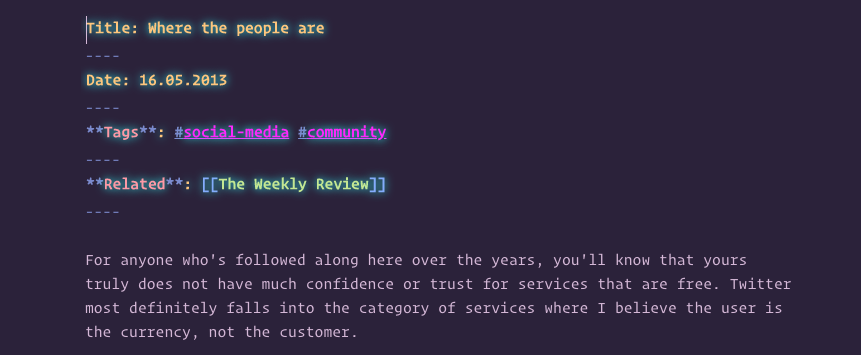As the year has rolled along and the days are starting to get a little longer up here in the north, I've been enjoying my use of Obsidian more and more. As I mentioned in the past about Roam, these tools are additive.
The more you use them, the more valuable they feel.
This isn't by accident — you have to make meaningful connections between your notes (as I mentioned here). But as you make those connections, you experience the feeling of building. Your base of knowledge matures a little more.
Obsidian illustrates this in lovely fashion with its graph view. I shared mine in late January, but here's how that has expanded as of today:
I've brought my 12 years of blogging content in here and started making connections. As well, I've added the Bible and started adding all my notes from the years. It makes for a pretty picture, but the value is in the connections and working with the notes themselves.
But I don't want to talk about that today. Instead, I want to focus on the basics.
How to get started with a tool like Obsidian
I had a colleague mention how hard 2020 had been and how he'd watched myself and others jump onboard with tools like Roam and Obsidian. With everything going on, he hadn't any margin to even make an attempt. And so his request was this: just tell me how to get started.
Good news: it's really easy. Here's the two step process:
- Just start writing and making connections to notes.
- Add existing content
Ok, so just start writing is hard on its own when you're struggling with a lack of margin and mental space. But maybe going through the effort is worth it. Let me expand on that.
Start writing
A nice option with both Roam and Obsidian is the daily note (that option needs to be enabled in Obsidian, but is the default view in Roam). To start using these tools, simply start outlining what you do each day with the daily note. It doesn't need to be a fancy template or filled with clever prose — just jot down what you do.
Making this a habit is valuable on its own. Both to build a base of knowledge over time, but also for the sake of your mental health.
As you build this habit, you can then start making connections. Come across an article that resonated with you? Add that to your daily note, then make a new note from it using the double bracket [[]] syntax (same for both tools). Now you have a note for this article and it's connected to the day you first came across it. You can open the new note and add quotes from the article, as well as your own thoughts.
Another common, easy use case is to make new notes based on what you're doing. If a specific project at work or home has your attention for the day, as you note what you're doing in the daily note, create a new note for the project itself. Open it and add a few details about what you're doing.
And that's it. I used Roam in this fashion for several months as I watched the community build and grow around these kinds of tools.
Use existing content
For me, I used both options to get started, but it's easier to get a sense of the value of these tools with option 2. When you can add a bunch of notes and easily make connections between them, you can very quickly start to see the value.
I was able to quickly add my blog content to my Obsidian library. As I previously used Kirby as my CMS, all my old blog content was text files stored in a flat folder structure. A little AppleScript, a little bit of work in Renamer, and I had 475 markdown files ready to add to a sub-folder where my Obsidian vault is stored. Then I commit it all to Git as well.
Once I could see all my writing from over the years, I started to make connections. I set a recurring daily task to update 5 notes in here. I open the graph view, grab a random unconnected dot, and open the file. From there, I made an explicit reference to my The Weekly Review note (plus any other direct references if they make sense and I happen to think of them), then I add any applicable tags.
Here's how that looks in the note itself:

After that, I started bringing in the Bible and adding my notes from my study over the years. And again, here's how these connections look now:

You don't have to use option #2 to see the value of Obsidian. If you don't have a collection of existing notes or articles, no problem. Today is the best day to get started on that.
Download the free tool, then start writing daily notes. Even 5 minutes a day will result in some good connections after a month or two.
